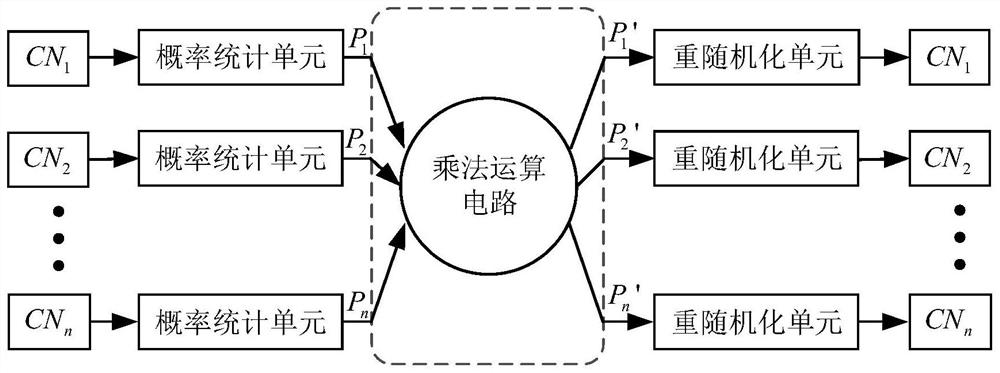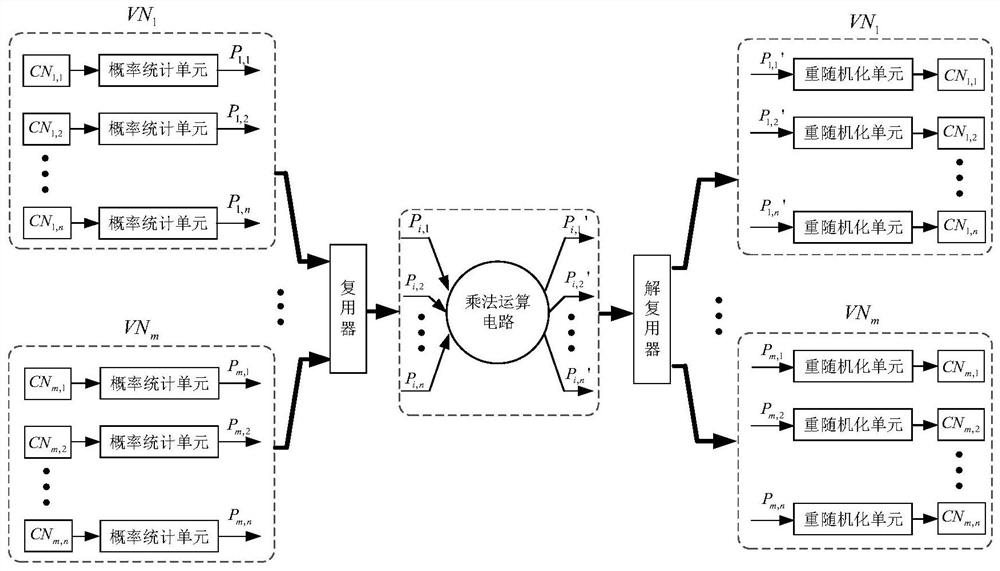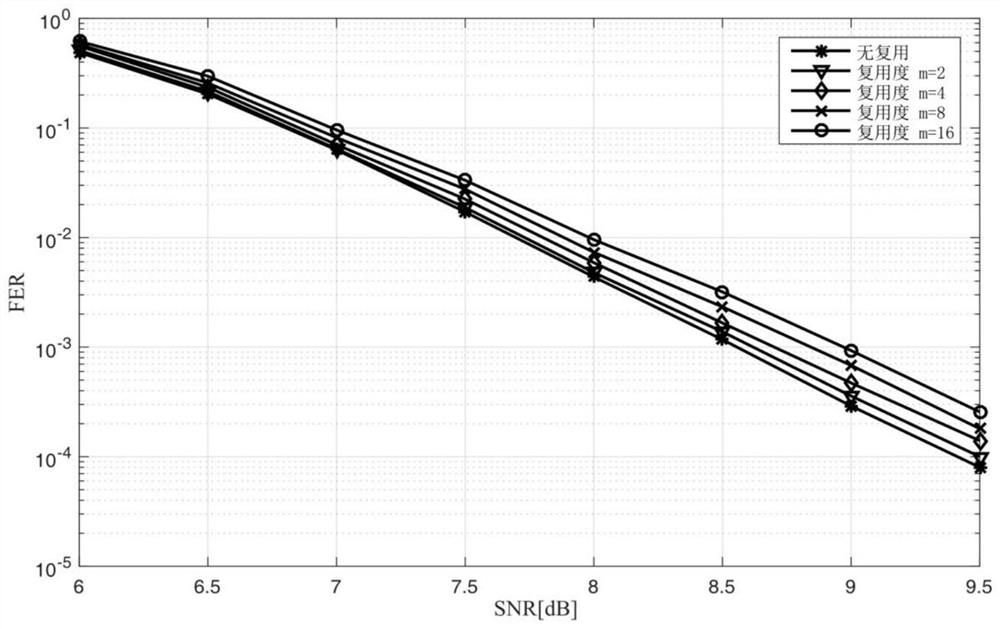A Variable Node Multiplexing Method for Semi-Random Decoder
A variable node and decoder technology, which is applied to the variable node multiplexing field of semi-random decoders, can solve the problem of large hardware resource overhead of variable nodes, and achieves a solution with reduced resource consumption, wide application range, and improved throughput. Effect
- Summary
- Abstract
- Description
- Claims
- Application Information
AI Technical Summary
Problems solved by technology
Method used
Image
Examples
Embodiment Construction
[0030] In order to make the object, technical solution and advantages of the present invention clearer, the present invention will be further described in detail below in conjunction with the accompanying drawings and embodiments. It should be understood that the specific embodiments described here are only used to explain the present invention, not to limit the present invention.
[0031] Such as figure 2 As shown, the present invention provides a variable node multiplexing method of a semi-random decoder, comprising:
[0032] (1) The variable nodes in the decoder are divided into multiple groups, the number of variable nodes in each group is greater than 1, and the variable nodes in each group reuse a multiplication circuit;
[0033] (2) In the current clock cycle, each group selects a variable node from the variable nodes in the group in parallel;
[0034] (3) Each selected variable node first converts the random bit stream input by the corresponding check node into a co...
PUM
 Login to View More
Login to View More Abstract
Description
Claims
Application Information
 Login to View More
Login to View More - R&D
- Intellectual Property
- Life Sciences
- Materials
- Tech Scout
- Unparalleled Data Quality
- Higher Quality Content
- 60% Fewer Hallucinations
Browse by: Latest US Patents, China's latest patents, Technical Efficacy Thesaurus, Application Domain, Technology Topic, Popular Technical Reports.
© 2025 PatSnap. All rights reserved.Legal|Privacy policy|Modern Slavery Act Transparency Statement|Sitemap|About US| Contact US: help@patsnap.com



